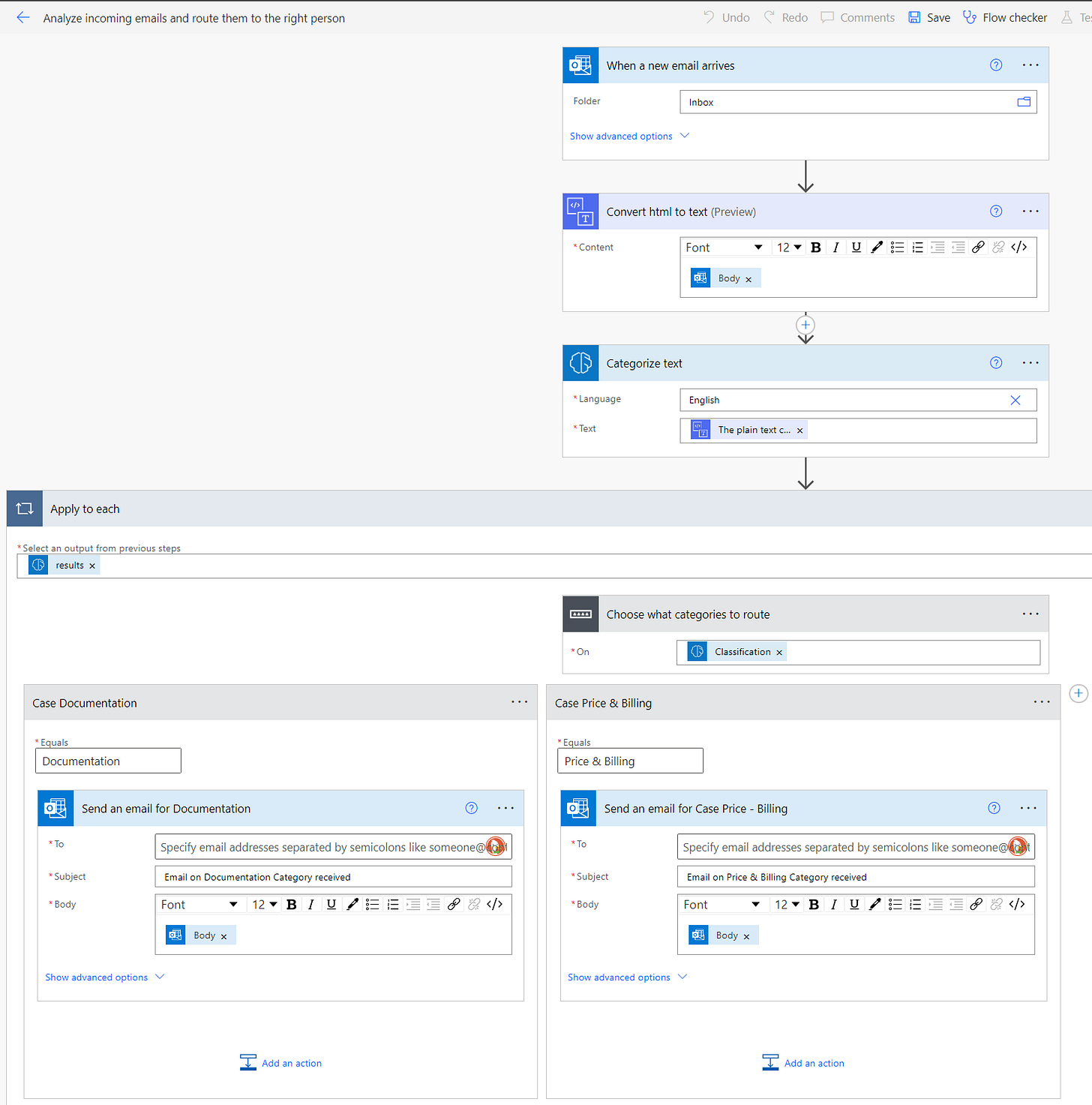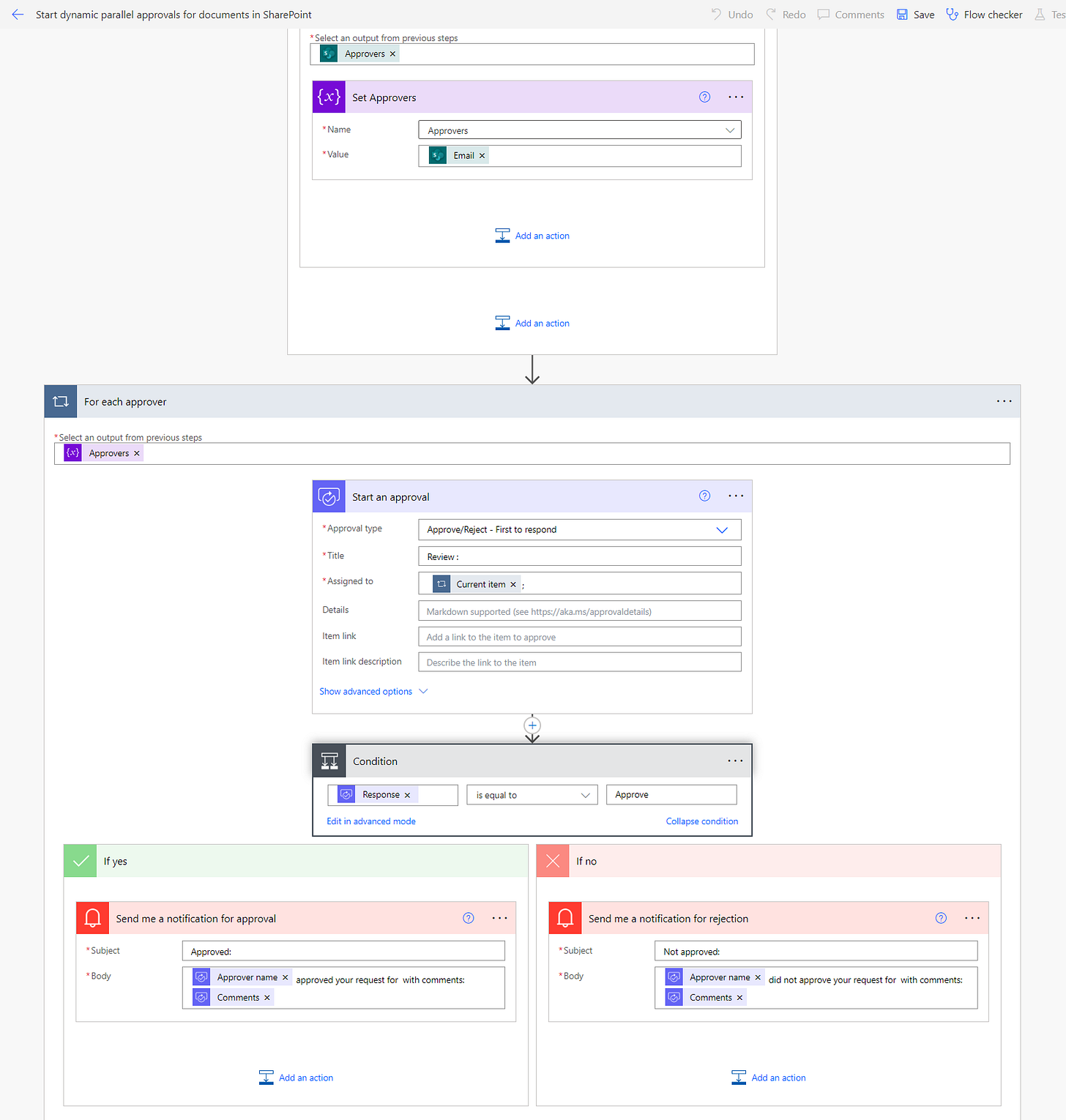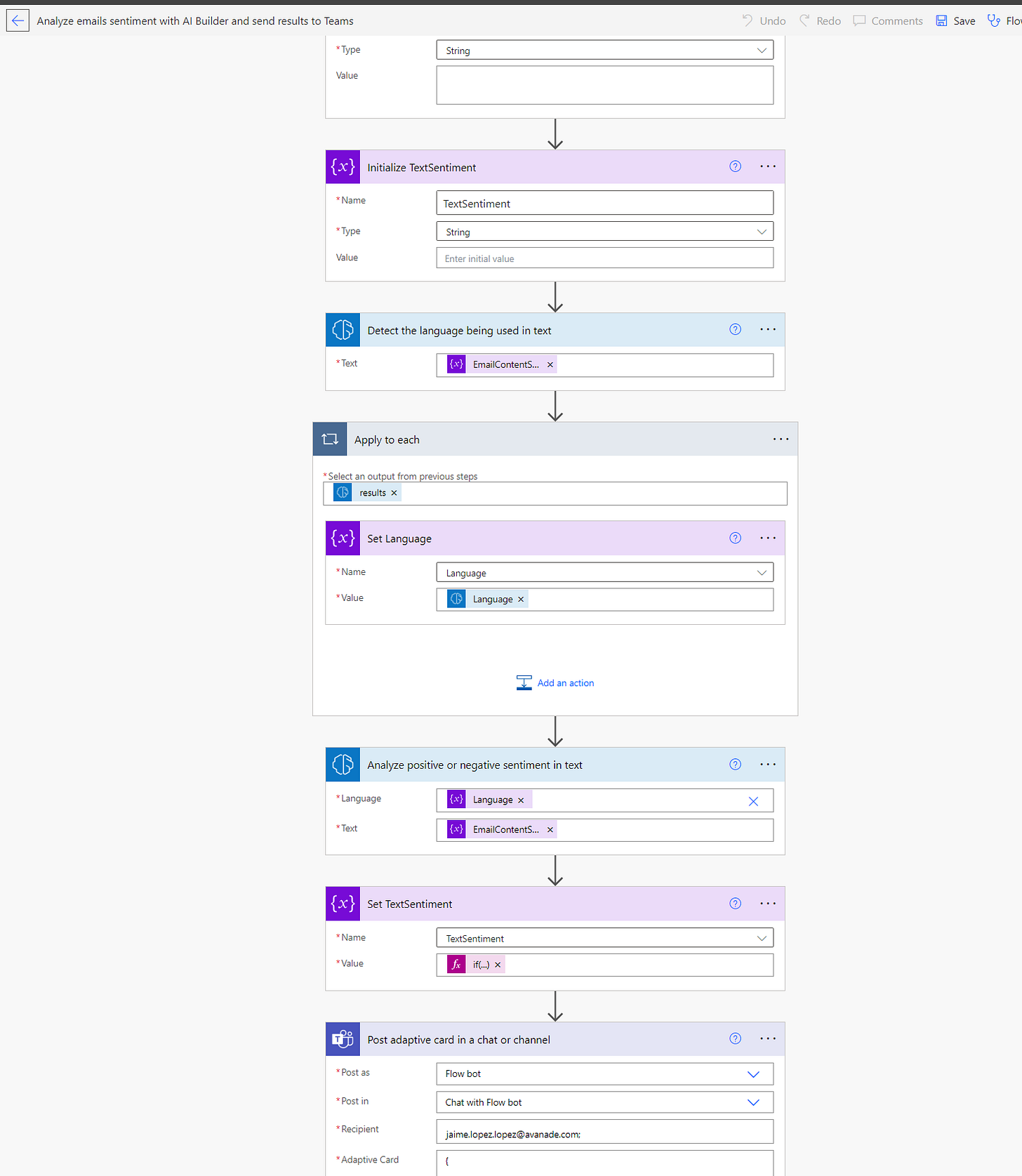Using Power Automate To Create 5 Useful Document Management Scenarios
Document management is one of the most tedious tasks in any company. However, it doesn't have to be that way. By using Power Automate, you can create automated processes that allow you to manage your documents quickly and easily.
In this article, I show you five examples of useful document management scenarios that employees can create by themselves based on Power Automate templates:
Automatic document routing: Files can be automatically routed to the correct department or team member based on certain criteria such as type, date, or location.
Document approval workflows: Approval workflows can be set up for documents such as invoices, contracts, or HR forms, where multiple approvals are required before the document is finalized.
Version control: Automated flows can be set up to track changes to documents, store previous versions, and notify the appropriate stakeholders of updates.
Document backup and archive: Automated flows can be used to back up and archive important documents to ensure they are secure and easily accessible.
Document categorization and tagging: Automated flows can be used to categorize and tag documents based on their content, allowing for easier search and organization.
You can use the Power Automate templates search page to find all flows described here.
Please, subscribe by clicking the following button before exploring each of these topics in more detail.
1. Automatic document routing
In the modern business world, it's important to make sure that every process is as streamlined as possible. This can include ensuring that documents are always routed to the right person, so they don't get lost in a sea of paperwork.
The process of automatic document routing can help companies save time and money by ensuring that documents are routed correctly from the start. Documents are sent directly to the correct department or team member based on criteria like type, date, or location. This helps ensure that all documents are tracked according to their specifications, which helps prevent errors before they occur.
SharePoint has a routing functionality called Content Organizer, but it may not be enough or may not do what you want it to do. More information in this link: https://support.microsoft.com/en-us/office/configure-the-content-organizer-to-route-documents-b0875658-69bc-4f48-addb-e3c5f01f2d9a
Analyze incoming emails and route them to the right person
This template allows when a new email arrives, to route the emails according to the detected text category using AI Builder. The categories are predefined as Problems, Compliments, Customer Service, Documentation, Pricing and Billing, and Personal.

Based on your needs, you can adapt this template to determine what is the origin of the documents: email with attachments, the creation of a file in SharePoint, or working with a document in OneDrive. And, also, where they should be routed with a preference for a SharePoint library. The rest, determining the document category, is done by AI Builder.
2. Document approval workflows
Documents such as invoices and contracts can be set up to require multiple approvals before they're finalized. Different people in an organization may need to approve a document for it to be considered complete.
These workflows can be used to streamline the process of approving documents, and also to ensure that all necessary signatures are collected prior to finalization. The process does not always have to be this complicated; it can vary depending on your company's specific needs.
As this type of flow is very common, Power Automate offers several templates focused on different objectives. I am going to comment on 3 of them so that you can take them as a starting point: Start dynamic parallel approvals for documents in SharePoint, submit a travel request for approval, and request manager approval for leave requests. You can adapt and modify them based on your needs.
Start dynamic parallel approvals for documents in SharePoint
The aim of this flow is to request approvals for a document in SharePoint by multiple people in parallel. Approvers are dynamically defined using a SharePoint list, and the degree of parallelism can be configured. If there are more requests for approvals than the defined limit, then these wait in the queue.

Submit a travel request for approval
The aim of this flow is to request approval for any travel request. Approvers can view their requests in the Approvals center, and will receive an email notification once a request is approved or declined. Approval requests are managed through SharePoint list items, and once a request is approved or declined, you will receive an email confirmation.
Request manager approval for leave requests
The aim of this flow is to create a request time off item in a Sharepoint list. Your manager will receive an email and approve the request when appropriate. You will receive an email once the request has been approved.
3. Version control
Version control is the process of managing any changes made to a document or set of documents. Power Automate makes it easy to set up version control for your documents, by tracking changes and storing previous versions, so that you can easily revert back to earlier versions if needed.
Version control can be used in any kind of work environment, whether you're trying to track changes in an internal document or a client-based contract. Here are some key benefits of using this process:
It helps reduce errors because all changes are tracked and reviewed by someone before they are implemented.
It improves collaboration because everyone knows what's been changed, who made the change, and when it was made.
It allows for easier tracking of history for future reference or audit purposes.
SharePoint Online has a versioning functionality for both documents and list items. Although it is a very complete functionality it may not be sufficient for your needs. More information at the following link, https://learn.microsoft.com/en-us/microsoft-365/community/versioning-basics-best-practices.
Move files from one SharePoint folder to another
The aim of this flow is to copy a file to another SharePoint folder after creating it in a SharePoint folder, and, then, delete the original file.
The template is very simple with only 3 steps. Remember that in previous flows we have used AI Builder to get a category from the content, why not use it here too? You can set your own criteria and move the document between folders, libraries, and sites.
4. Document backup and archive
A document backup workflow is an automated process that sends copies of important documents to a secure location where they can be accessed by authorized users. Document archives are similar to backups but typically contain more historical information about a document than just its most recent version.
Both document backup and archive workflows reduce the risk of losing important information due to hardware failure or human error by providing additional copies of documents that are stored in multiple locations. They also allow you to easily access older versions of documents when necessary (for example if there was a mistake made during editing or if someone asks you for a previous version).
I have chosen 2 Power Automate templates that will allow you to see the existing potential. Backup and archiving activities can have different types of needs. In these 2 templates, I show you how to save documents directly to your PC from SharePoint and how to backup items in a list. Remember that you can adapt them to your needs, for example, the target PC can be whatever you intend to use for archiving.
Copy files from SharePoint to your PC
The aim of this flow is to copy it to your Windows desktop PC when a file is added to a given SharePoint document library.
Export SharePoint list items to File System in CSV format and send an email
Every day, export the items in the SharePoint list to the file system in CSV format, send an email and update the SharePoint list.
5. Document categorization and tagging
Power Automate allows you to create workflows that automatically categorize and tag documents based on their content. This means that you don't have to spend time manually assigning categories or tags—the system will do it for you! All you have to do is create the workflows and put them into action.
This process makes it much easier for users to find what they're looking for when they're searching your system for a certain type of document. It also allows administrators to manage large volumes of information without having to spend hours tagging each individual file individually.
Analyze emails sentiment with AI Builder and send results to Teams
Use AI Builder to conduct sentiment analysis on Outlook emails. Upon receiving a new email, you will be notified in Teams with a message containing the email details and analysis.
Imagine running a similar flow on existing documents in a SharePoint library and setting their metadata automatically. If you could get the department, area, or any other value that could be extracted from the content you would save a lot of time and effort.

Summary
In conclusion, while document management can often be a tedious and time-consuming task in many organizations, Power Automate provides an efficient solution to simplify the process.
The 5 examples of useful document management scenarios outlined in this article demonstrate how Power Automate can automate a variety of document management processes, from automatic document routing to document categorization and tagging. By leveraging Power Automate's capabilities, employees can create their own customized workflows, increasing efficiency, and freeing up time for other important tasks.
Overall, adopting Power Automate for document management can help organizations to streamline their operations, increase productivity, and reduce costs.
CopyAI was used to help write this article by providing the author with a way of content creation.
Don't forget to share the article with your friends and colleagues if you find it interesting, click on the heart if you like it, or click on the comments to share what you think of the article, if you would add more or if you want to clarify any of them.





